Weed and Feed for Bull Thistle
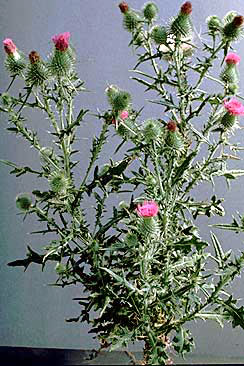
Bull thistle is a widespread biennial thistle originally from Europe and Asia, but now introduced throughout North America. Although it is intimidating in appearance and can sometimes form large infestations, this thistle is not as challenging to control as many others and is mainly a problem in hay fields and pastures. Bull thistle is also commonly found along trails, roads and vacant fields.
Legal status in King County, Washington
Public and private landowners are not required to control infestations of bull thistle that occur on their property in King County. Bull thistle is a Class C Noxious Weed in Washington, first listed in 1988. Because control is not required in the county, it is on the list of Non-Regulated Noxious Weeds for King County. For more information, see Noxious Weed Lists and Laws or visit the website of the Washington State Noxious Weed Control Board.
Bull thistle might be confused with native thistles as well as more serious noxious weeds such as milk thistle, a Class A noxious weed in Washington, and creeping thistle, a Class C noxious weed that is much more difficult to control.
Identification (see below for more photos)
- Branching, erect biennial, 2 to 6 feet tall
- Rosettes form in first year, flowering stems the second
- Long, sharp spines on the leaves at the midrib and the tips of the lobes
- Leaves are deeply lobed and hairy - there are coarse hairs on leaf tops, making leaf feel rough to the touch, and woolly hairs on the underside
- Leaf bases extend down onto stems and form spiny wings along the stems
- Pink-magenta flower heads top each stem
- Flower heads are "gumdrop" shaped and spines extend all around the base of the flower heads
- Flowering June to September
Habitat and impact
Bull thistle prefers sunny, open areas and can tolerate a wide range of conditions, from moist to dry soils, and is typically found in disturbed areas such as roadsides, trails, logged areas, vacant land, pastures and cultivated land. Overgrazed pastures are susceptible to bull thistle encroachment, and it can sometimes form dense stands that reduce productivity and stocking levels. Bull thistle may also dominate forest clear cuts and reduce growth of tree seedlings.
Growth and reproduction
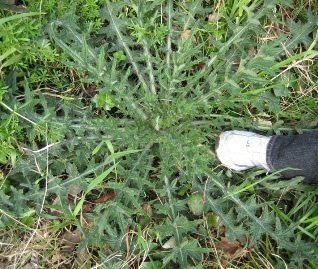
Bull thistle has a two year life cycle, flowering and setting seed in the second year. Seeds are short-lived on the soil surface but can persist for many years when they are buried, such as form cultivation activities. Seed germination generally occurs in the fall and spring. Basal rosettes form and continue to grow until winter and can grow quite large, up to 3 feet in diameter. Rosettes that are not large enough by spring may not flower until the following year. Flowering usually starts in mid-June and continues into early fall. Plants can be self-pollinated or insect-pollinated. Bull thistle does not reproduce vegetatively and does not have rhizomes.
Control
Prevention: Bull thistle only reproduces by seed so prevention of seeding and takign care not to spread seeds are key to preventing new infestations. Contaminated hay is a primary means of spread of this species so be careful to purchase weed free hay or watch closely for new plants in the areas hay is kept or spread. Do not leave cut stems of flowering bull thistle on the ground because they are likely to form viable seed after they are cut.
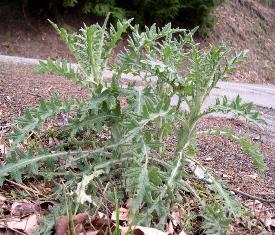
Manual control: Bull thistle can be dug up with a shovel. Usually removing the top couple of inches of root is sufficient to kill the plant, especially after it has bolted (produced stems). A shovel or other tool can used to chop off leaves from one side of the plant to gain easier access to the roots, which can then be dug up. Flowering stems should be collected and destroyed to keep them from forming viable seed.
Mechanical control: Mowed thistles will produce new branches from basal buds but close cutting or cutting twice per season will usually prevent seed production and reduce the population over time. More more effective control, cut plants with a sharp shovel at 1-2 inches below the soil surface prior to flowering. If only one cutting a year is possible, cut when plants are in bud for best results. Cultivation and tilling can also be effective to control bull thistle.
Chemical control: For information on herbicides and recommendations for control, please see the Pacific Northwest Weed Management Handbook. There are several herbicides that are effective on bull thistle, but it is important to carefully match the product with your site, local conditions and regulations, and other weed and land management issues, and always follow the label directions for the product you are using. If your site has animals grazing, please read instructions carefully on grazing restrictions. For grassy areas, it is best to use a selective broadleaf herbicide to keep the competitive grasses intact. After spraying, wait two weeks or more to give the herbicide time to work.
Biological control: The bull thistle seed head gall fly (Urophora stylata) lays eggs on closed flower buds in June and July. After hatching, the larvae burrow into the seed-prodcuing tissues to feed, forming galls and reducing seed production. If the bull thistle population is large enough to support a good sized population of this insect, it can be an effective way to reduce seed production of the bull thistle. This insect will not get rid of the bull thistle, however, just reduce its impact. See the biological control page for more information.
Cultural/grazing: Bull thistle is not as competitive in a well-managed pasture and regular cutting combined with good pasture management can reduce bull thistle to a manageable level. Also, goats and sheep have both been used for grazing management of bull thistle. Even horses will help by picking out many of the nectar-rish flowers and eating them before they go to seed.
Additional information on bull thistle
- Washington State Noxious Weed Control Board (external link)
- King County bull thistle weed alert (download Adobe Acrobat file)
- King County bull thistle best management practices (download Adobe Acrobat file)
- University of Washington Burke Museum Herbarium Image Collection - Cirsium vulgare (external link)
What to do if you find this plant in King County, Washington
Because bull thistle is so widespread, property owners in King County are not required to control it and we are not generally tracking infestations. We can provide advice on how to control bull thistle, but there is generally no legal requirement to do so.
Bull thistle photos
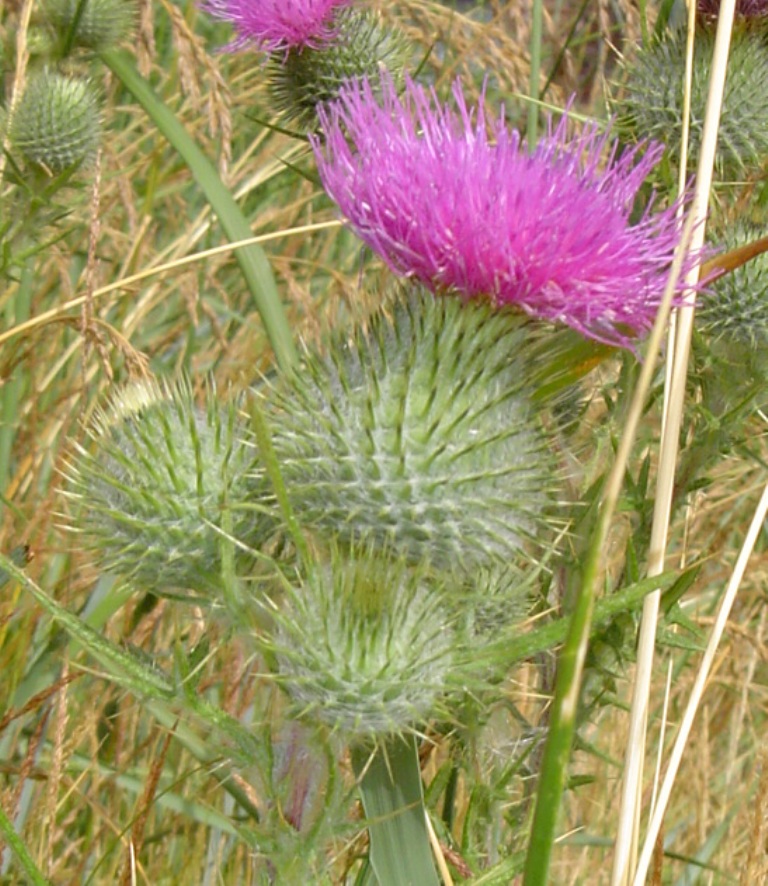
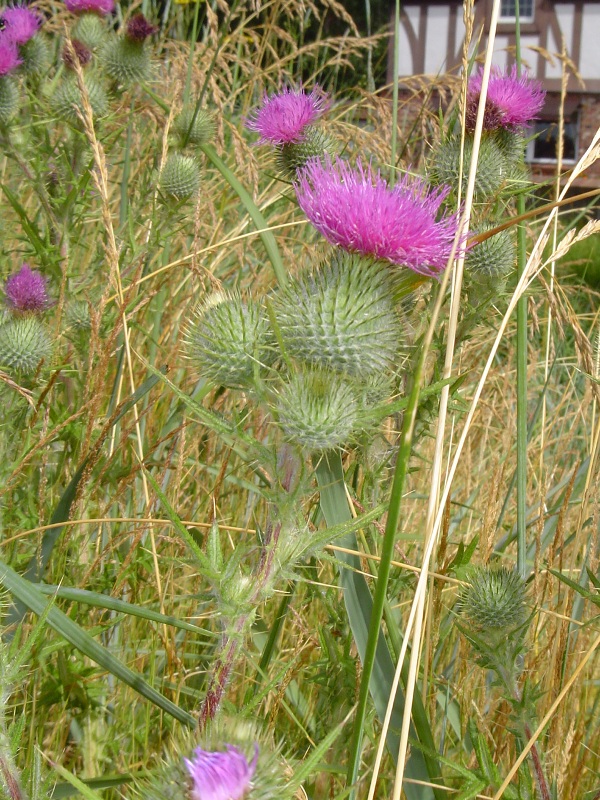

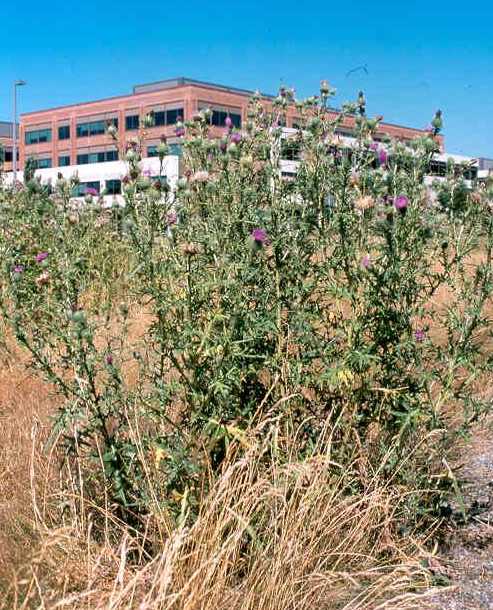

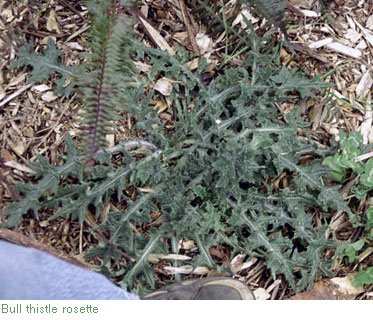

Source: https://kingcounty.gov/services/environment/animals-and-plants/noxious-weeds/weed-identification/bull-thistle.aspx

0 Response to "Weed and Feed for Bull Thistle"
Post a Comment